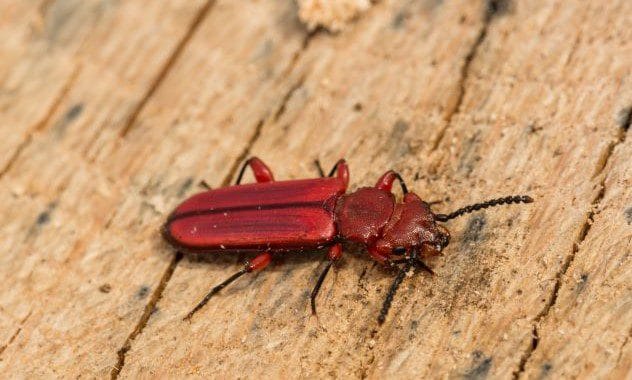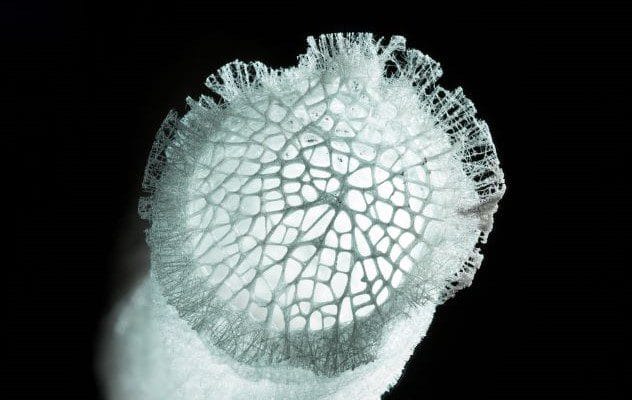It’s often joked that some processed foods could probably outlast us all, even in a post-apocalyptic world. While that might give us a chuckle, the animal kingdom boasts some real contenders for enduring the most extreme conditions. From freezing temperatures to radiation, these creatures have developed incredible survival skills.
This list explores ten animals that biologists believe possess the resilience to withstand massive environmental changes and catastrophic events. Discover what makes these creatures so uniquely equipped to survive where others would perish.
Triops
Triops, also known as tadpole or dinosaur shrimp, are small crustaceans found worldwide. Their secret to survival lies in their incredibly tough eggs. These eggs, called cysts, have a durable exoskeleton that protects them from extreme conditions.
These eggs can survive unbelievable cold and heat, even resisting ionizing radiation. They’ve even been found unharmed in the digestive tracts of other animals, spreading them to new areas. Triops eggs can remain viable for decades, hatching when conditions are right.
While individual Triops only live for a couple of months, the hardiness and longevity of their eggs have allowed them to exist for millions of years. If the worst were to happen, these tiny creatures would likely continue their reign.
Alaskan Wood Frog
These frogs, found throughout North America, are especially at home in the Alaskan wilderness, and can survive being frozen alive for months. They are the only amphibian species that live north of the Arctic Circle.
As winter approaches, these frogs hunker down and freeze. Over two-thirds of their body solidifies into ice. Their hearts stop, and they cease breathing for months. Yet, they survive in this state for up to seven months at temperatures as low as 0°F (-17.8°C).
Their bodies produce natural antifreeze, including glucose and a special carbohydrate compound called glycolipid. These substances protect their tissues from the cold, allowing them to thaw out and return to life when the weather warms.
Hydra
Hydras are freshwater creatures similar to sea anemones, found worldwide in ponds, streams, and rivers. They use their arms to catch food particles, and if they lose a limb, they can simply grow it back.
Named after the mythological monster, hydras can regenerate lost limbs or even heads. Any living hydra material can reform into an entirely new animal, effectively making them immortal.
Their cells regenerate and are replaced every three weeks, preventing aging or internal deterioration. Scientists believe many hydras living today have been around for millions of years, and they are studying their stem cell biology to understand human regeneration.
Red Flat Bark Beetle

Insects, with their sheer numbers, are likely to survive any apocalypse. Among them, the red flat bark beetle is particularly well-suited. These beetles, found across North American forests, can withstand incredibly low temperatures.
Like the Alaskan wood frog, they survive being frozen for months due to a natural antifreeze. Proteins prevent water molecules from grouping together, and glycerol coats them in a non-freezable layer. They also dehydrate themselves to prevent internal freezing.
These beetles can survive temperatures as low as -238°F (-150°C), far lower than anything seen in North America. In such conditions, they would have no competition for food or predators, making them perfectly positioned to thrive.
Mariana Snailfish
These bottom-dwellers live in the deepest parts of the ocean, including the Mariana Trench. They can withstand immense pressure, lack of sunlight, and extremely cold temperatures.
The Mariana snailfish is the deepest-living fish ever discovered. Its ability to withstand pressure allows it to hide from predators in crevices. They feed on sediment and food particles, surviving indefinitely in these conditions.
They can repair their own DNA and stabilize essential proteins to survive tough times. They have also lost most of their sense of smell but have a heightened ability to taste sour flavors. These adaptations make them resilient to extreme conditions.
Alligator
Alligators, both American and Chinese species, are well-equipped for a changing world. They are remarkably similar to ancient dinosaurs which biologists consider them to be living fossils.
Alligators can go up to three years without food due to their slow metabolism, effectively hibernating during scarce times. They can also hold their breath for over an hour and have special hemoglobin in their blood that conserves oxygen.
Their bodies intuitively conserve blood and oxygenated blood to where it’s needed in adverse situations. Scientists are studying alligator hemoglobin for potential medical applications, such as creating artificial human blood for transfusions.
Planaria Flatworm
Planarians are adaptable flatworms found worldwide. They thrive in freshwater, seawater, rivers, and even on land. When cut in two, they can regenerate into two new beings.
They can regenerate an entirely new head, eyes, and brain in less than a week, and their brains are simpler with only about 10,000 neurons versus 86 billion in the average human brain. This regeneration ability makes them nearly impossible to force into extinction.
Their regenerative abilities are being studied by neuroscientists, with hopes that learning more about planarian regeneration could help the human brain regenerate, assisting those with traumatic brain injuries.
Longhorn Beetle
The longhorn beetle lives in Southeast Asia and the Pacific Rim’s tropical, volcanic areas. They thrive in hot, humid environments with temperatures far beyond what humans can stand. The ground temperatures where these beetles live can soar above 150°F (65.6°C), but that’s no problem at all.
The beetle’s intricate shell reflects sunlight and funnels air. Small patterns on the exoskeleton keep sunlight and heat from penetrating the shell. They’ve adapted to the areas with active volcanoes, and biologists now try to copy the beetle’s shell pattern to prevent overheating.
Scientists hope these beetles’ shells could unlock energy-saving techniques for humans, influencing climate change solutions. If the world keeps heating up, these longhorn beetles will continue to thrive.
Antarctic Glass Sponge

The Antarctic glass sponge resides in the coldest Antarctic seas and has a (nearly) immortal lifespan. Each sponge can live for as long as 15,000 years, making them one of the longest-living creatures on Earth.
Living in icy waters allows them to grow very slowly, resulting in an unbelievably slow aging process. These sponges are made of biogenic silica, so their outer structures are made of a form of naturally occurring glass.
They eat plankton and grow quickly, but they also can handle a lot of time between meals thanks to their slow metabolisms. If the apocalypse comes, they will need this trait to survive longer than nearly anything else.
Camel
Camels can survive in the world’s most extreme environments. They withstand massive temperature swings, surviving in below-freezing temperatures and soaring triple-digit heat.
They can go months without food, storing nutrients in their humps and slowing their metabolism. The hump also stores moisture, allowing them to go up to seven months without water. They eat almost anything, including thorny plants.
Camels have three stomachs and an efficient digestive tract to re-digest food and squeeze out moisture. Their dung is so dry it is burned for fuel by Bedouin desert peoples. They also have an intricate brain that cools itself, preventing heat stroke.
These ten animals showcase the stunning diversity and resilience of life on Earth. Their unique adaptations offer a glimpse into the potential for survival in the face of extreme environmental changes.
Which of these animals surprised you the most? Share your thoughts in the comments below!










